 Chapter 1 - Environmental responsibilities
Chapter 1 - Environmental responsibilities
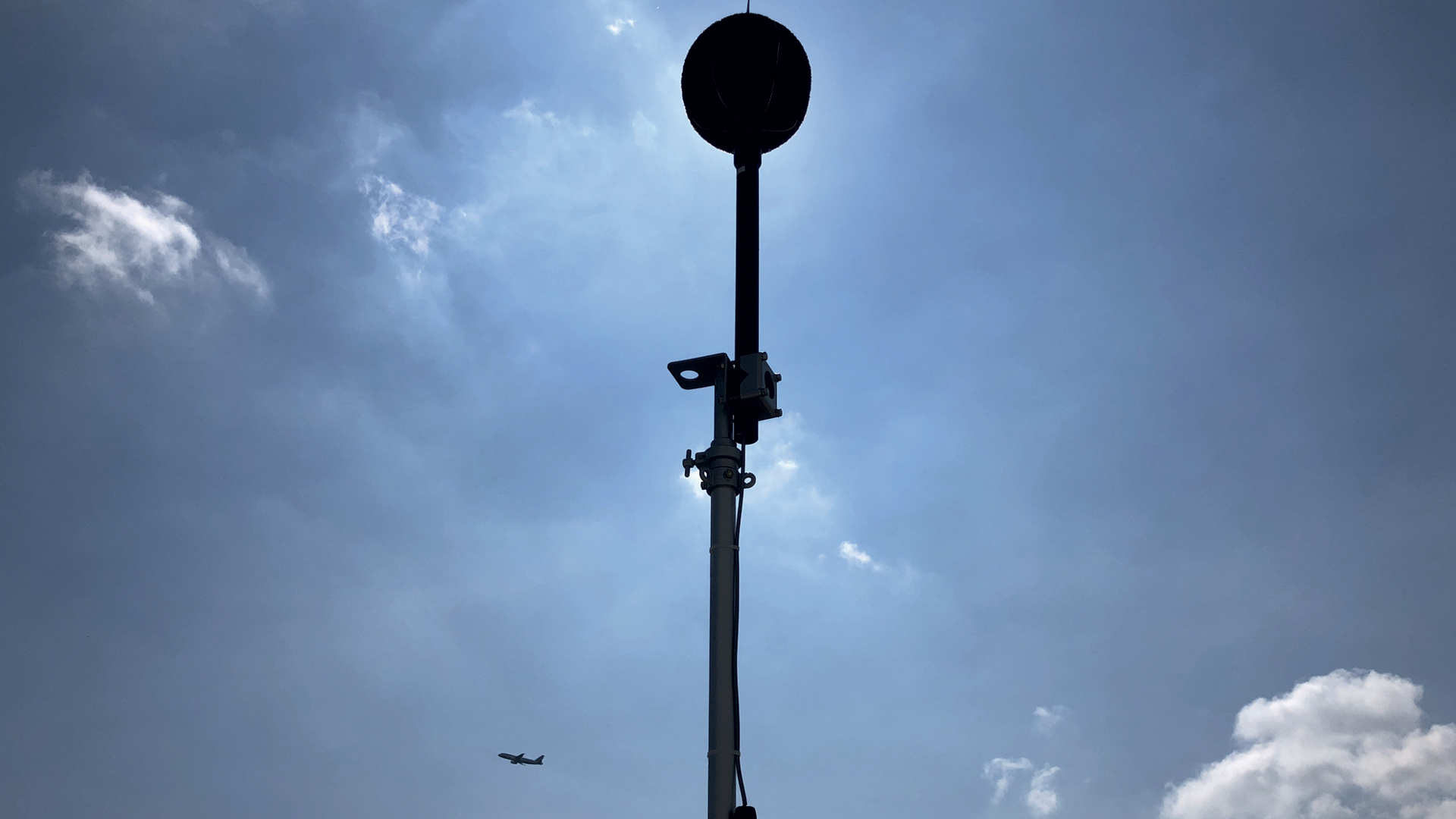
Chapter 1 - Environmental responsibilities
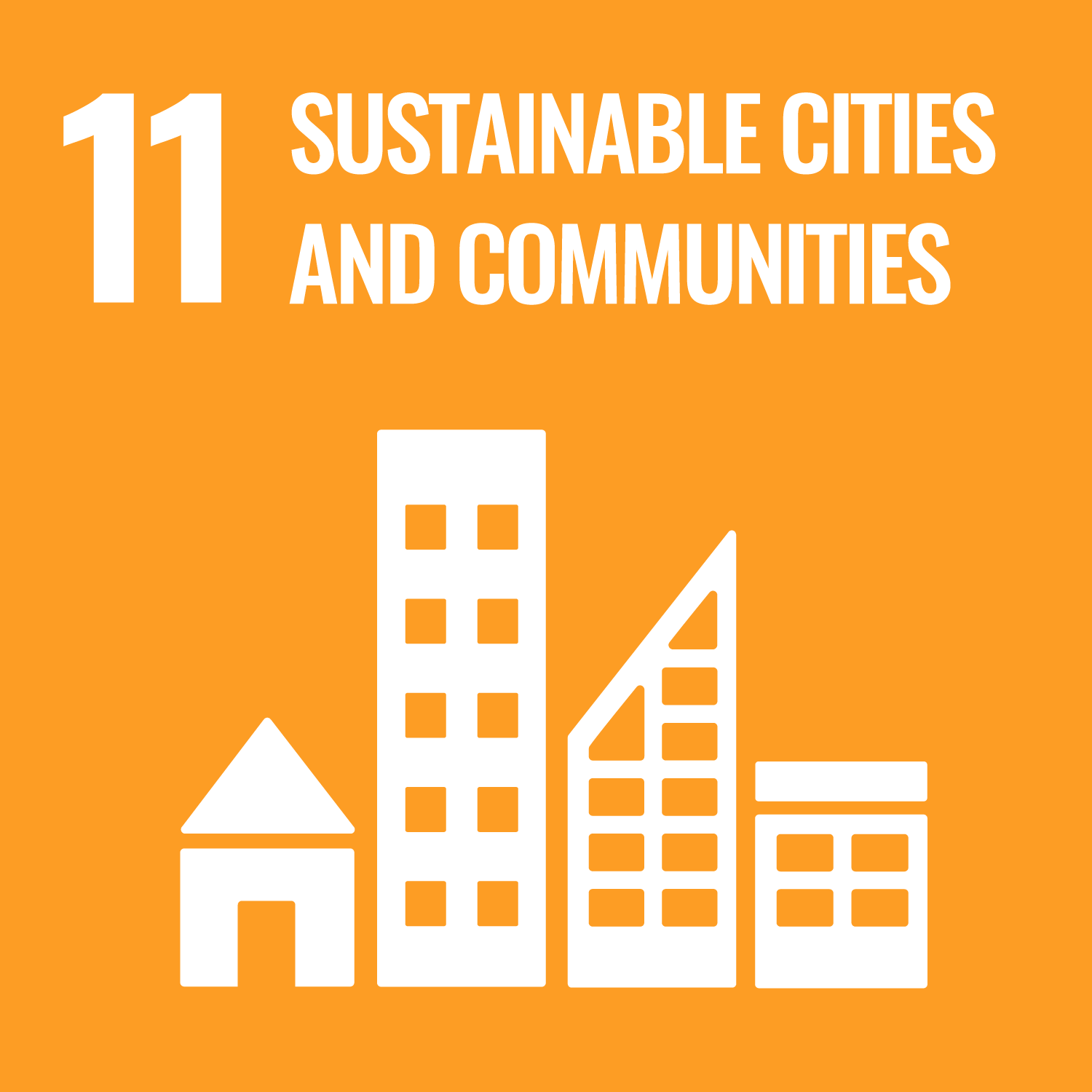
Air traffic noise is one of Genève Aéroport’s main concerns. Aware of its urban location, it strives to contain the noise impact of airport activities.
Noise exposure surface info
2017
35.4 km2
2018
33.3 km2
2019
29.9 km2
2030
30.4 km2
Genève Aéroport is implementing extensive measures to reduce the effects of air traffic on residents, in particular noise pollution.
At present, take-off at Geneva Airport is permitted for airline flights between 06:00 and midnight. Genève Aéroport has undertaken to restrict this further, i.e. from 22:00. Only a maximum of three intercontinental flights can receive a departure slot beyond 22:00. Nonetheless, there is still traffic departing from Geneva after 22:00 (flights behind schedule) due to operational, meteorological and technical circumstances affecting air traffic in Europe throughout the day. In all cases, these movements are the ones to which residents are most sensitive. Indeed, their impact is considered some ten times greater than that of the day's flights in the calculation of noise curves.
« In 2019, overall aircraft movements at night were reduced by 5.2% and take-offs were down by 15.5% relative to 2018. »
Quotas and a roadmap
Genève Aéroport’s operations are based on regulations aiming at reducing the airport’s night-time sound footprint. On 14 November 2018, the Sectoral Aviation Infrastructure Plan (SAIP) was adopted by the Federal Council. This document established a two-step target for Genève Aéroport: a medium-term noise curve, with which the airport must comply, and then a lower noise curve, to comply with by 2030.
The new Objectives Agreement, adopted in May 2019 by the Council of State, specifies the mechanisms through which this result can be achieved. Finally, a draft amendment to the airport's operating regulations was submitted for public consultation by the Federal Office of Civil Aviation (FOCA) in September 2019. The document was the subject of extensive consultation, during which both the population and the municipalities concerned were able to express their views. In relation to this, FOCA received more than 600 items of mail. The project includes operational measures which allow the airport to, firstly, stabilise, and then reduce, its sound footprint. In particular, it provides for the future introduction of a quota system for delayed take-offs after 22:00. More specifically, each airline will be entitled to a certain number of unplanned departures after 22:00. Once the quota is used up, a punitive fee will have to be paid. Such a mechanism, proposed by Genève Aéroport, should also favour less noisy aircraft.
A further measure: building a new runway exit lane, which will reduce aircraft taxiing times.
Moreover, airlines are also being encouraged to operate the most modern, and therefore, least noisy aircraft, through the means of charges applied to each landing, adjusted based on the aircraft’s noise class. A specific charge for take-offs after 22:00 will also apply.
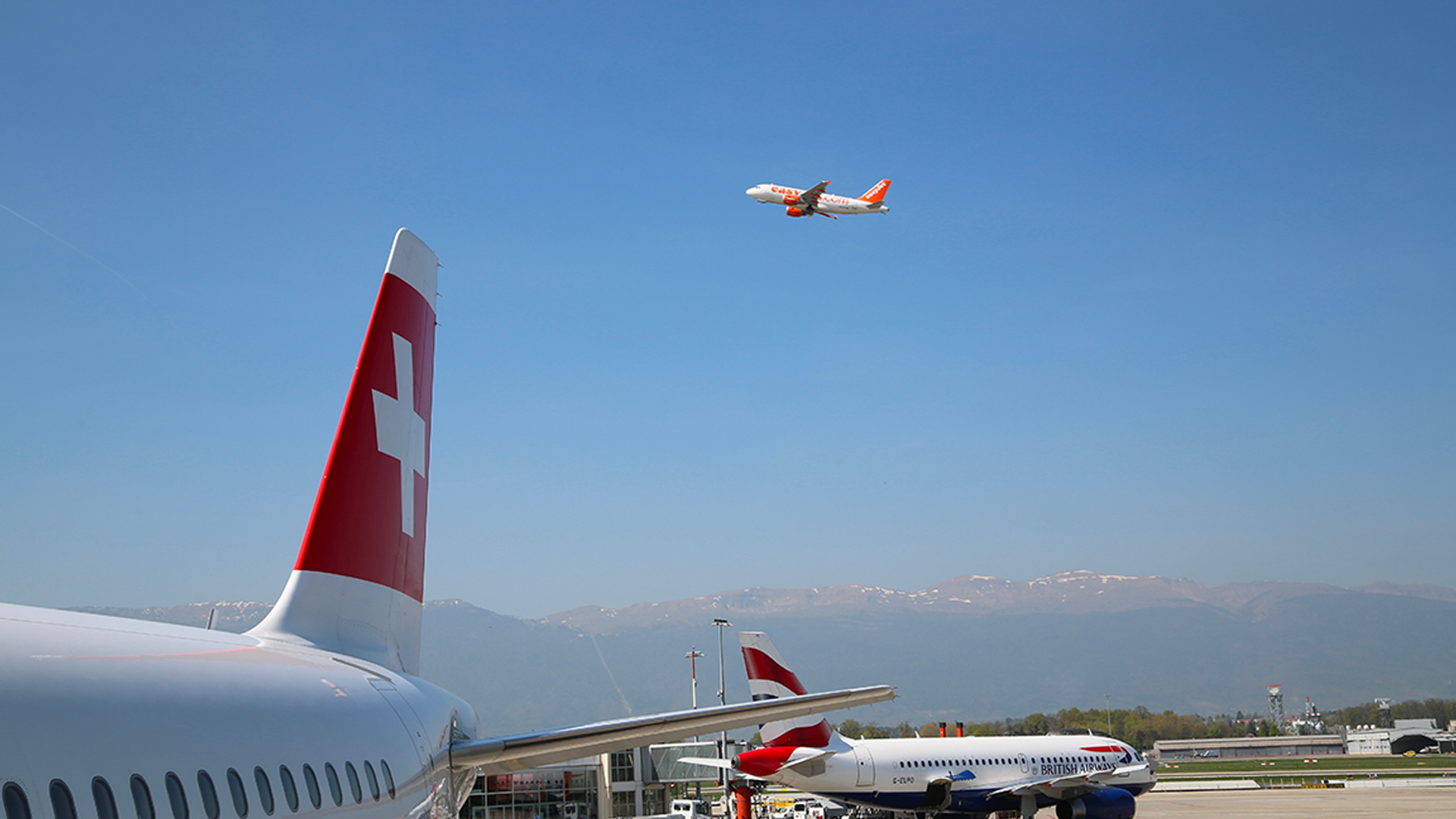

A joint approach to noise control
On 31 October 2019, the airport, easyJet and SWISS signed, for the first time, a joint declaration, as part of a common approach to fighting noise pollution. In this document, they commit to plan and implement measures aiming at reducing flight delays after 22:00. Such measures include the integration of reserves in planning, the prioritisation of delayed flights, noise quotas for delayed flights after 22:00, as well as the monitoring of these measures.
Take-offs after 22:00
2017
1,865 take-offs
2018
1,836 take-offs
2019
1,551 take-offs
Positive developments from the perspective of residents
The figures measuring the noise emitted by aircraft movements are represented as «noise curves», superimposed over a map of the area. They represent the actual air traffic over the past year, at different times of the day. In the calculations, night traffic is weighted in order to reflect the discomfort represented by late evening aircraft movements. Noise curves are calculated annually and submitted to the Advisory Board for Air Traffic Nuisance Control (Commission consultative pour la lutte contre les nuisances dues au trafic aérien, CCLNTA).
The extent of the noise curves is decreasing for the second consecutive year. This result is mainly due to a decrease in aircraft movements after 22.00 (-5.2%), thanks to measures implemented specifically targeting this hourly period. The surface area exposed to noise decreased by 3.4 km² between 2018 and 2019. The number of residents (actual population) exposed to noise above the legal limits has also decreased, from 22,726 in 2018 to 20,135 in 2019. The framework set by the PSIA is respected. It can be observed that Geneva Airport's noise footprint is evolving favourably towards the target scenario by 2030.
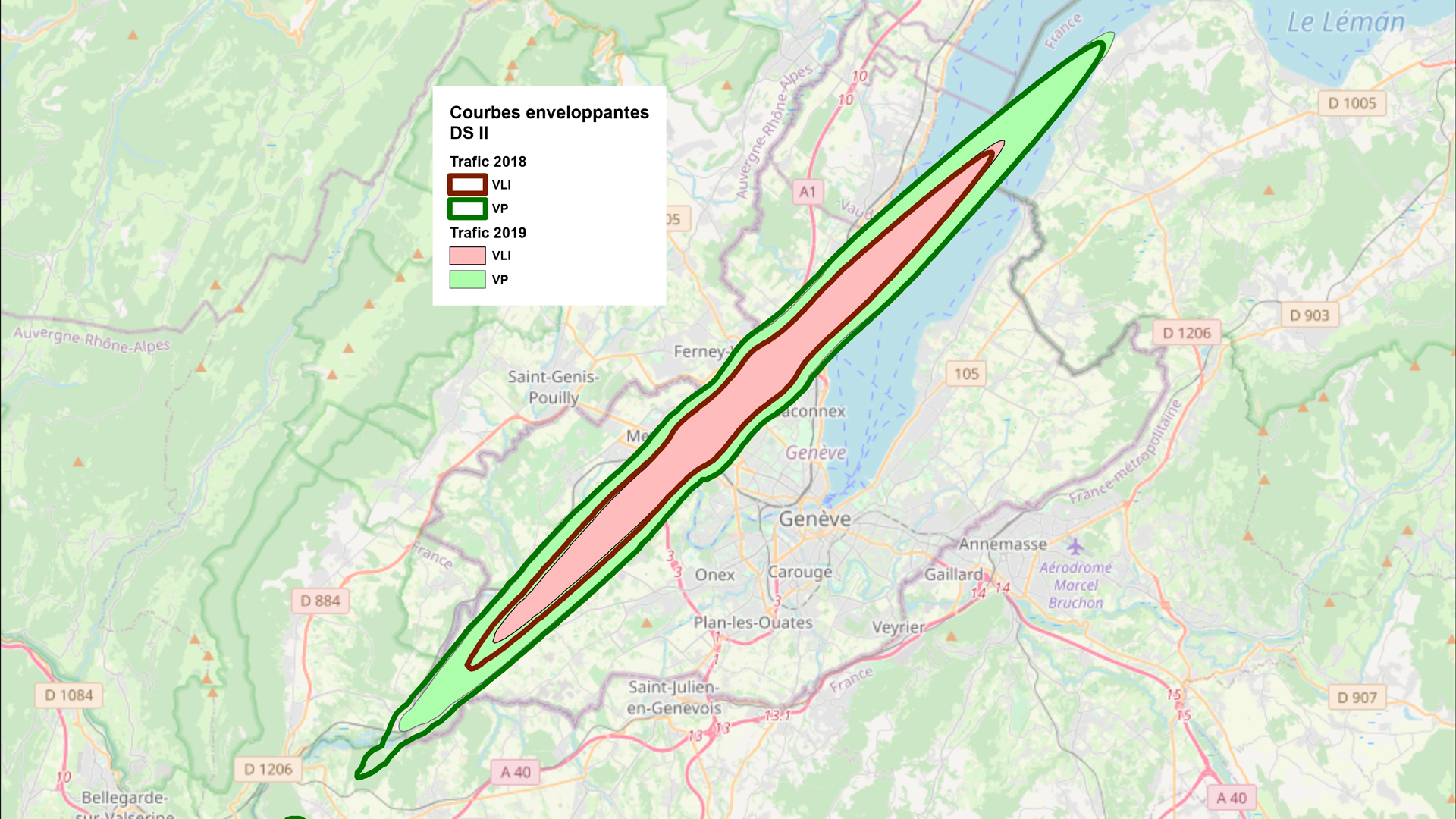
A constant dialogue with citizens
The Advisory Board for Air Traffic Nuisance Control meets quarterly. On these occasions, Genève Aéroport, the neighbouring municipalities, local residents and environmental associations, as well as the airlines, discuss a number of topics related to the airport's sound footprint. In 2018 and 2019, the discussions focused on the Environment Fund’s revenue and expenditure, the evolution of noise curves, air traffic operational measures, the SAIP draft and the draft amendment of the operating regulations submitted following the adoption of the SAIP, Genève Aéroport’s sustainable development strategy, the incentives for users to prefer sustainable modes of transport, the electrification of the fleet of vehicles and equipment on the apron, as well as questions from board members.
In order to improve dialogue with local residents, Genève Aéroport has developed an interactive platform concerning aircraft movements and emitted noise.
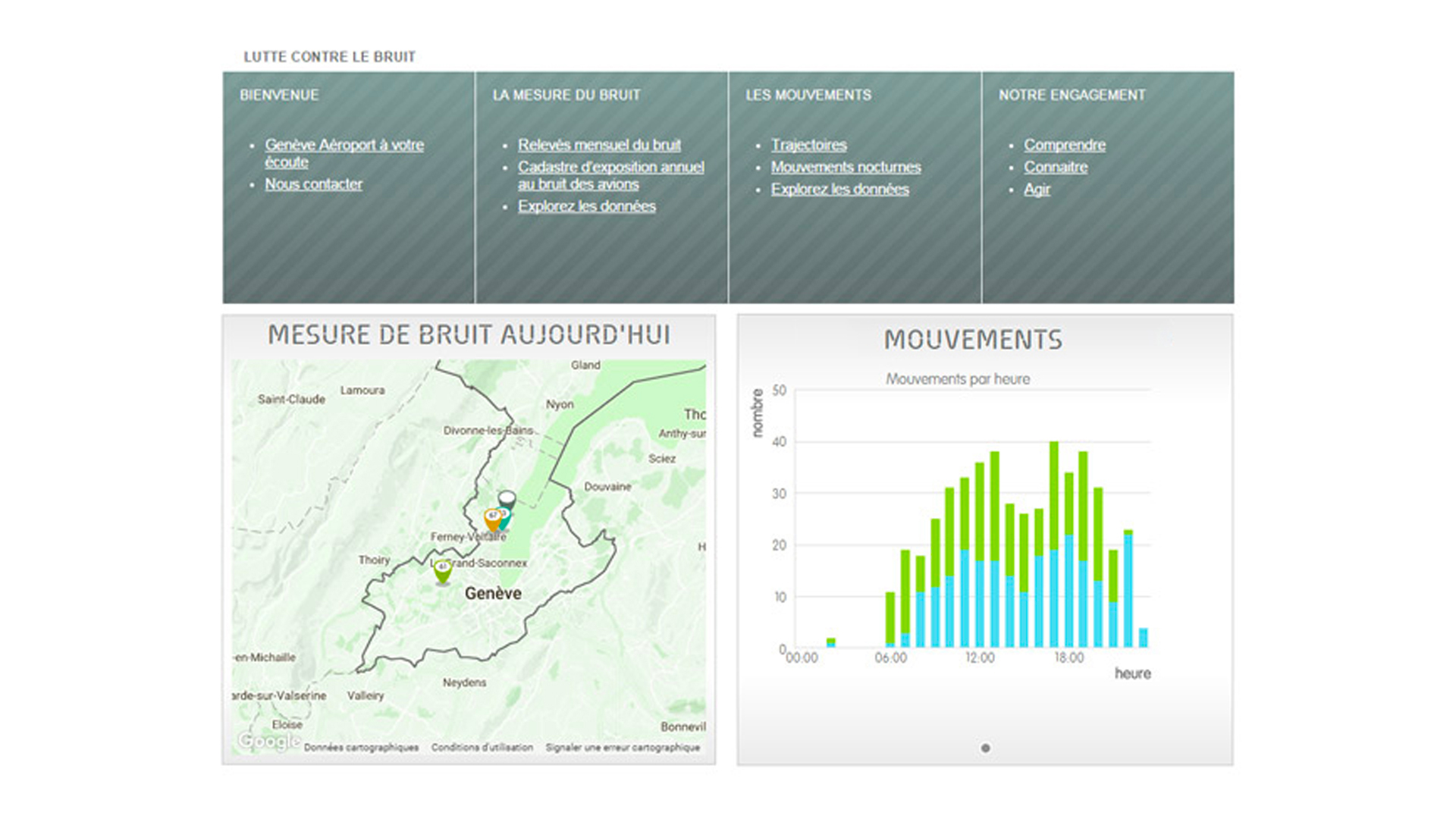
Different types of requests
Requests and complaints relating to aircraft movements and the airport’s activities are handled by Genève Aéroport. These requests come from local residents disturbed by the noise of flying aircraft.
The number of complaints per complainant increased from two in 2018 to 4.5 in 2019. In that year, 88% of requests were related to aircraft noise and the routes followed as well as helicopter movements.
Complaint History - Period 2015 - 2019
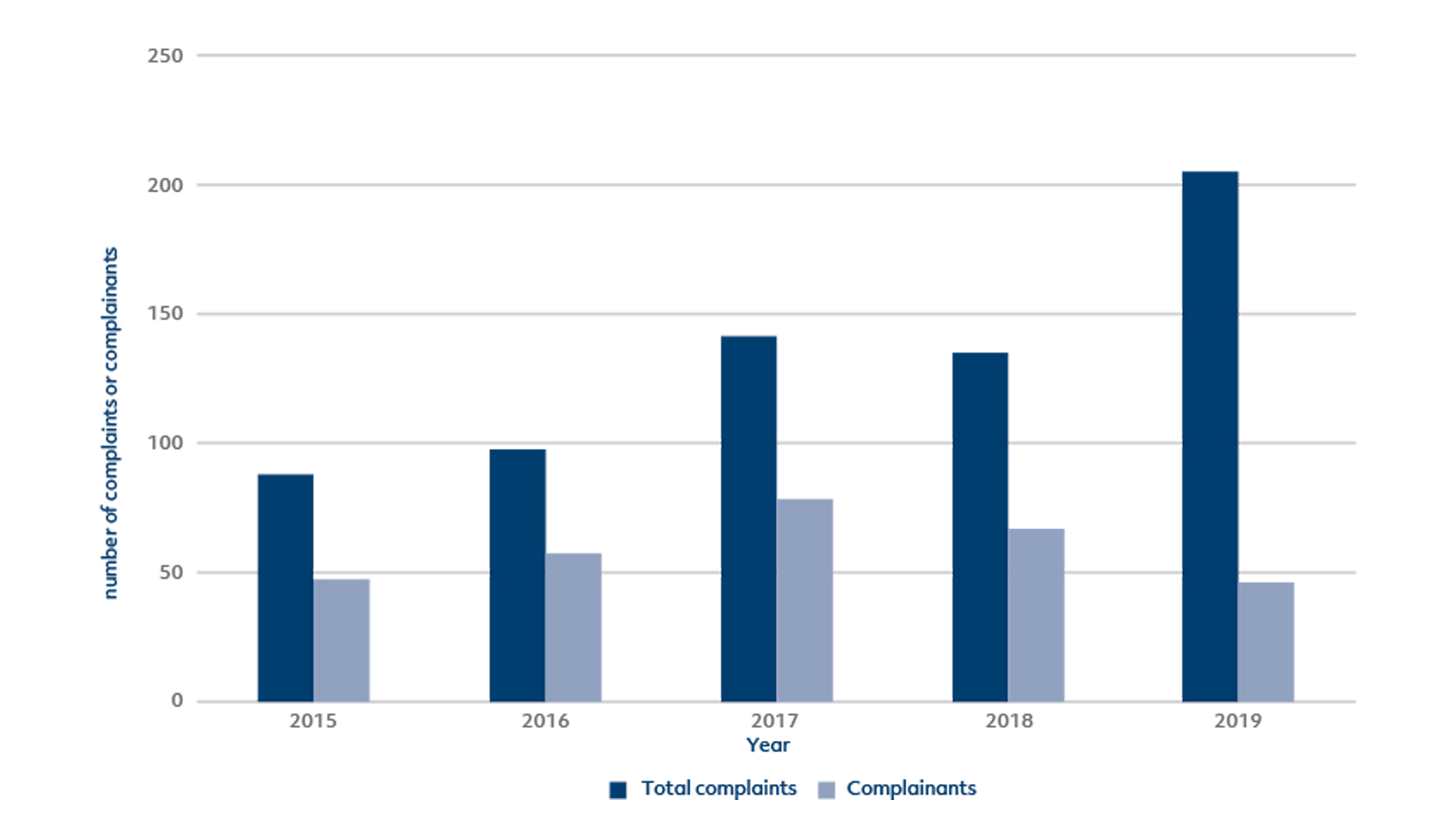
Dwelling soundproofing programme
Since 2003, the dwelling soundproofing programme for the municipalities bordering the airport has allowed hundreds of homes to be soundproofed each year.
Interview with Alison Grimond-Teste, Head of Noise mitigation measures
- What is the soundproofing programme?
- Genève Aéroport takes care of the soundproofing of dwellings located in the municipalities bordering the airport. In September 2017, the Federal Office of Civil Aviation (FOCA) validated a new concept. A 10-year deadline was established for the soundproofing of more than 3,000 homes around the airport.
- How is it financed?
- The programme’s financial burden is borne by the airlines through airport charges specifically allocated to noise mitigation measures. The airport is investing in the resources and equipment necessary to monitor the work.
- Which residential areas can benefit from the programme?
- First, homes must be located in an eligible area (Vernier, Meyrin, Satigny, Bellevue, Genthod, Versoix, Pregny-Chambésy and Le Grand-Saconnex).
In addition to this, four cumulative criteria must be:
- At least one room is exposed to noise.
- At least one of the immission limit values is being exceeded.
- The building was built, modified or converted before 15 January 1979.
- The sheathing to the building meets the requirements of the acoustic specifications and recommendations. - How many dwellings have been soundproofed by Genève Aéroport?
- Between 2004 and 2019, 3,983 dwellings were soundproofed, for a total of 55 million CHF.

More modern and silent aircraft
Through its system of charges, Genève Aéroport encourages companies to operate at Geneva using more modern and silent aircraft. For example, in June 2019, Kenya Airways expanded its network with a new route to Geneva. Flights are operated using the new Boeing 787-8 Dreamliner. It’s an aircraft with 20% less fuel consumption and emitting 20% less carbon dioxide compared to the previous-generation aircraft. It is also more silent, thanks to its technologically-advanced engines. In order to strengthen its environmental incentive system, Genève Aéroport has developed a new programme, with the aim of recognising the efficient use of airport slots by taking into account the aircraft filling rate. This new programme will be negotiated in 2020 with the airlines.
Aircraft are divided into five noise classes. In 2019, 18.7% of aircraft operating on the apron were classified in Category 5 (the least noisy, line and charter passengers only), compared to 13.7% in 2018.
Breakdown by noise class (line and charter, passengers only, excluding ferry flights)
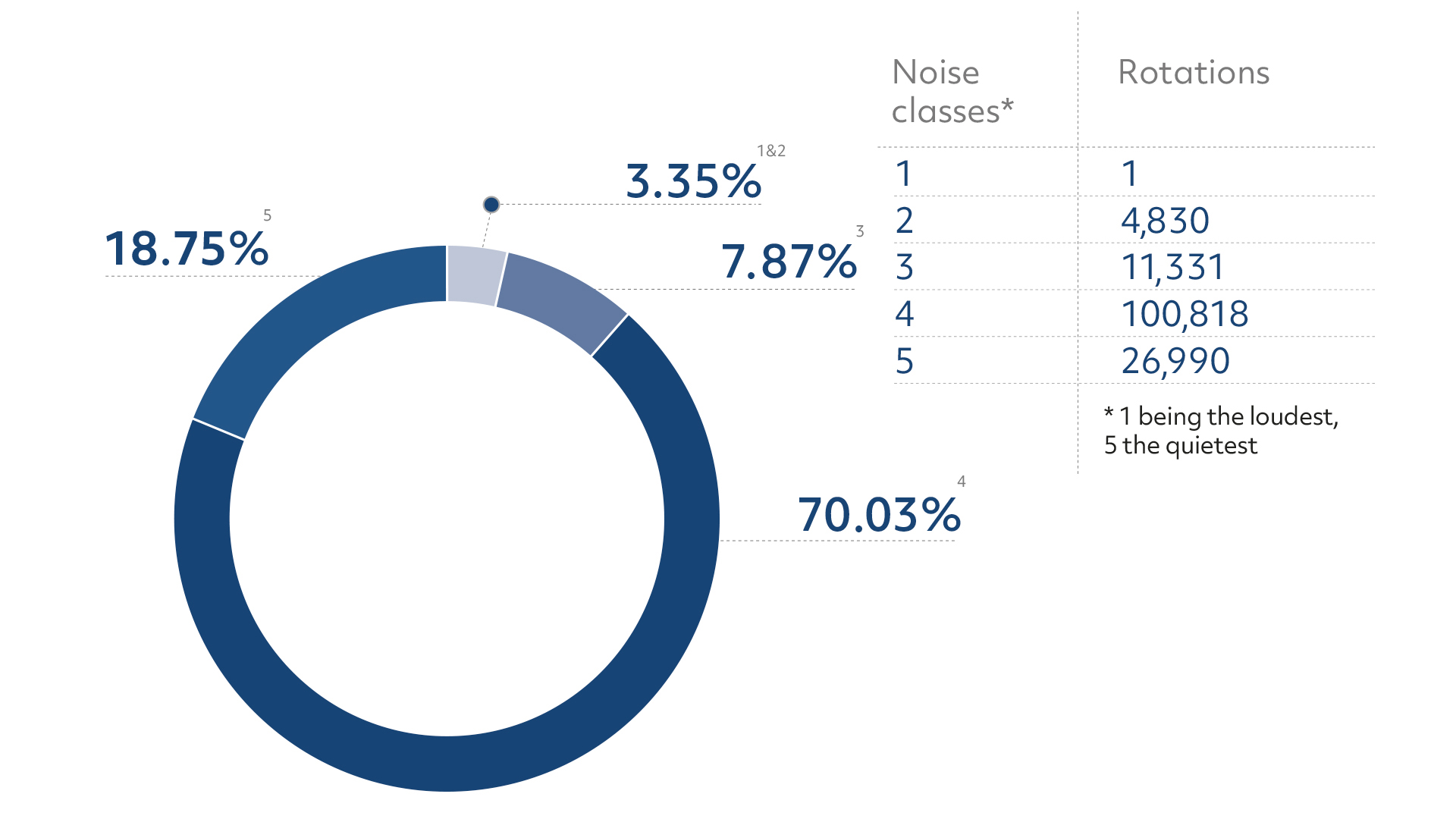
« In 2019, 18.7% of aircraft on the apron were category 5 aircraft (the least noisy, line and charter passengers only), compared to 13.7% in 2018. »
